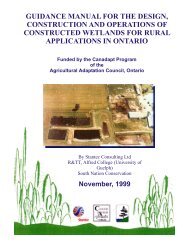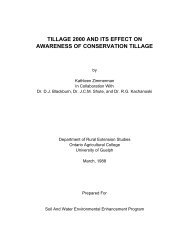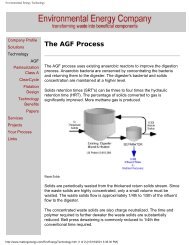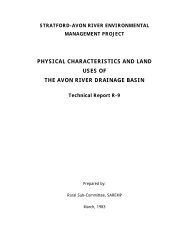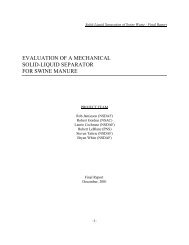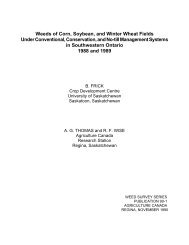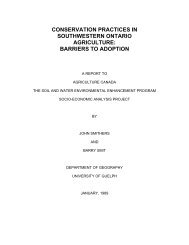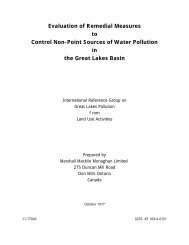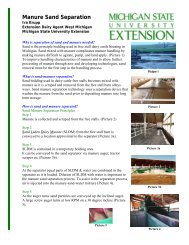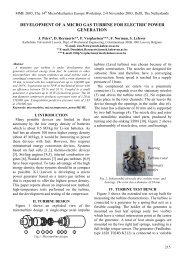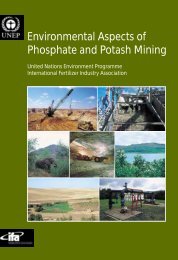The Applications of Chemical Analyses of Sediments and Soils in ...
The Applications of Chemical Analyses of Sediments and Soils in ...
The Applications of Chemical Analyses of Sediments and Soils in ...
Create successful ePaper yourself
Turn your PDF publications into a flip-book with our unique Google optimized e-Paper software.
<strong>Sediments</strong> <strong>and</strong> soils play important roles <strong>in</strong> the environment as reservoirs fornutrients <strong>and</strong> tox<strong>in</strong>s for animal <strong>and</strong> plants, sites for detoxify<strong>in</strong>g mechanisms <strong>and</strong>, <strong>in</strong> thesuspended form, provide major transportation routes. As key stages <strong>in</strong> aquatic <strong>and</strong>terrestrial food cha<strong>in</strong>s <strong>in</strong>organic <strong>and</strong> other tox<strong>in</strong>s <strong>in</strong> sediments <strong>and</strong> soils are significant<strong>in</strong> biological concentration <strong>in</strong> each cha<strong>in</strong>. eventually affect<strong>in</strong>g the health <strong>of</strong> man.Copper <strong>and</strong> z<strong>in</strong>c are the most common fresh water pollutants <strong>in</strong> Canada withmercury severe locally (Sprague 1975). <strong>The</strong> metals accumulate <strong>in</strong> aquatic organisms,especially <strong>in</strong>vertebrates, with concentration factors <strong>of</strong> 1000, 40,000 <strong>and</strong> 100,000 forcopper, z<strong>in</strong>c <strong>and</strong> mercury, respectively (Chapman et al, 1968). Freshwater plants alsohave concentration factors <strong>of</strong> 1,000 x for copper <strong>and</strong> mercury <strong>and</strong> 4,000 for z<strong>in</strong>c.Metals can also concentrate <strong>in</strong> terrestrial plants through "luxury" consumption.Various plant species can accumulate different trace metals when <strong>in</strong> abundantsupply. For example it has been found <strong>in</strong> solution culture work that turnip leaves canconta<strong>in</strong> 8,000 ppm Mn, 4,000 ppm Mo, 1,500 ppm Zn <strong>and</strong> 1,000 ppm B.(Beeson <strong>and</strong>Lyon, 1948). Only iron <strong>and</strong> copper were rejected by the plant. <strong>The</strong> tomato can alsotake up high concentrations <strong>of</strong> metals <strong>in</strong>to the leaflets. Hickory leaves can accumulateup to 5,000 ppm barium <strong>and</strong> 500 ppm lanthanum <strong>and</strong> yttrium <strong>in</strong> the leaves (Cannon,1969). Astragalus is a concentrator <strong>of</strong> selenium (Beath et al, 1934) <strong>and</strong> sweet clover<strong>of</strong> boron. <strong>The</strong> hazard exists, therefore, that the health <strong>of</strong> animals or man consum<strong>in</strong>gsuch plants could be affected. <strong>The</strong> known or suspected effects <strong>of</strong> anomalousconcentration <strong>of</strong> trace elements <strong>in</strong> plants <strong>and</strong> animals, <strong>in</strong>clud<strong>in</strong>g humans, <strong>and</strong> their1



